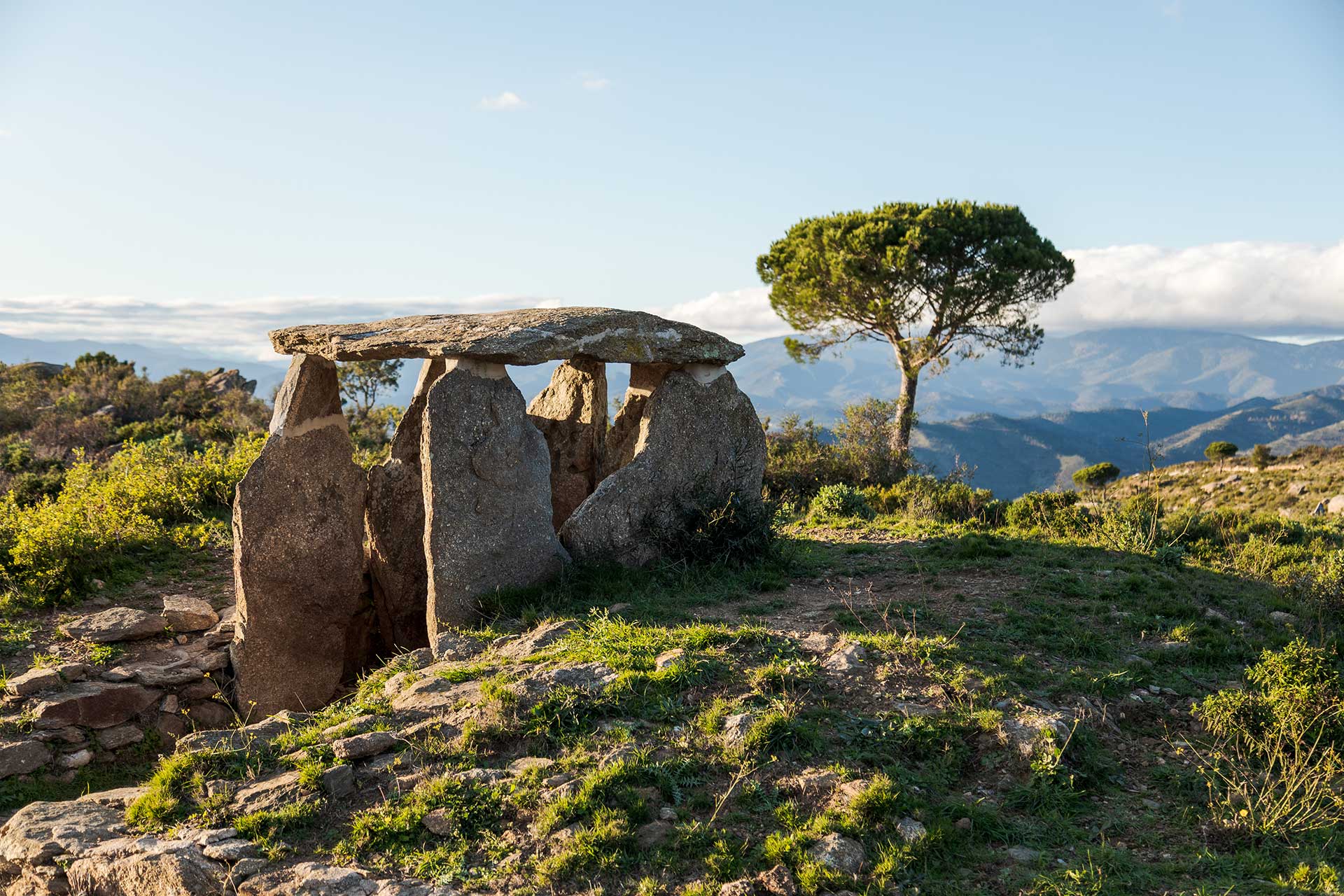It is a dolmen from the Middle Neolithic — 1st half of the 3rd millennium BC. The first to study it and give it its name was Isidre Macau in 1934. It is a corridor tomb, with a long rectangular chamber and a wide corridor with converging parallel walls or a large Catalan V-shaped gallery. The chamber is of parallel walls, and consists of six slabs and the roof. There are no traces of paving. Its internal dimensions are 2 m long, 1.4 m wide and 1.6 m high. Access was via a slab corridor, built on flat ground. Well-preserved remains of a mound can be seen on all sides of the chamber, which must have been circular with a diameter of 8 or 9 m, and filled with stones. There is no sign of the retaining ring, which must have been formed by a dry stone wall.




